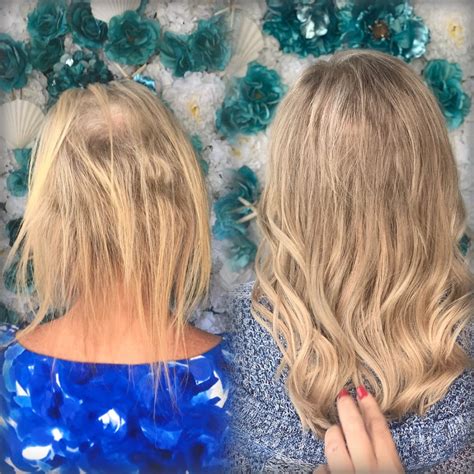Introduction
Aging can bring about changes in hair texture, thickness, and growth patterns. For older women, thinning hair and hair loss are common concerns. These issues can impact self-confidence and overall appearance. Hair extensions offer a solution to address these challenges and achieve fuller, more voluminous hair.

Challenges of Hair Extensions for Older Women
- Scalp sensitivity: As we age, our scalp becomes more delicate. Using heavy or uncomfortable extensions can cause irritation and discomfort.
- Hair breakage: Thinning hair is prone to breakage, and adding extensions can put additional strain on the existing strands.
- Age-related hair loss: Conditions like alopecia areata and female pattern baldness can lead to significant hair loss. Extensions may not be an effective option in such cases.
Motivations for Hair Extensions
- Increased volume and density: Extensions can add fullness and thickness to thinning hair, creating a more youthful and vibrant appearance.
- Versatility in styling: Extensions allow for greater flexibility in styling, enabling women to experiment with different hairstyles and colors.
- Improved self-confidence: Fuller, healthier-looking hair can boost self-esteem and reduce the psychological impact of hair loss.
Effective Strategies for Hair Extensions
- Consult a professional: Seeking guidance from a licensed hairstylist is crucial. They can assess your hair health, recommend suitable extension types, and ensure proper application.
- Choose lightweight extensions: Opt for extensions made from synthetic or human hair that are lightweight and cause minimal strain on the scalp.
- Regular maintenance: Extensions require regular care to maintain their quality and longevity. Follow the recommended cleaning and conditioning instructions, and schedule appointments for touch-ups.
Step-by-Step Approach to Hair Extensions
1. Consultation and Hair Analysis:
* Consult with a hairstylist to determine the type of extensions best suited for your hair and needs.
2. Extension Selection:
* Choose lightweight, high-quality extensions that match the texture and color of your natural hair.
3. Extension Attachment:
* The hairstylist will attach the extensions using a method appropriate for your hair type.
* Common techniques include clip-ins, tape-ins, and fusion bonds.
4. Styling and Maintenance:
* Style the extensions as desired.
* Follow the hairstylist’s instructions for maintenance, including washing, conditioning, and brushing the extensions.
Types of Hair Extensions for Older Women
1. Clip-In Extensions:
* These extensions are easy to apply and remove on a daily basis.
* They are ideal for occasional use or temporary volume enhancement.
2. Tape-In Extensions:
* These extensions are thin, adhesive-backed wefts that are attached close to the scalp.
* They provide a more natural and seamless look than clip-ins.
3. Fusion Extensions:
* Fusion extensions are attached to individual strands of the natural hair using a bonding agent.
* They are the most permanent type of extension and typically require professional removal.
4. Wiglets and Toppers:
* These are partial hairpieces that are designed to cover specific areas of hair loss.
* They can provide volume and coverage without the commitment of full extensions.
Hair Extensions for Specific Hair Types
1. Fine Hair:
* Choose lightweight, synthetic extensions with a similar texture to your natural hair.
* Avoid heavy or bulky extensions that can weigh down fine hair.
2. Thinning Hair:
* Opt for extensions that are close to your natural hair color and thickness.
* Use clip-ins or tape-ins that allow for gradual addition of volume.
3. Damaged or Brittle Hair:
* Focus on extensions made from high-quality, ethically sourced human hair.
* Avoid harsh adhesives or bonding agents that can further weaken damaged hair.
Benefits of Hair Extensions for Older Women
- Increased Hair Volume: Extensions can add fullness and density to thinning hair, giving it a more youthful and healthy appearance.
- Versatile Styling Options: Extensions provide endless possibilities for styling, allowing older women to experiment with different looks and express their individuality.
- Increased Self-Confidence: Fuller, more voluminous hair can boost self-esteem and reduce the emotional distress associated with hair loss.
- Non-Invasive Treatment: Hair extensions are a non-surgical and non-permanent solution for hair loss. They do not require medication or invasive procedures.
- Improved Social Interactions: Fuller hair can improve social interactions by making older women feel more attractive and confident in social situations.
Conclusion
Hair extensions offer a valuable solution for older women with thin short hair. By carefully choosing the type of extensions and following proper maintenance techniques, it is possible to achieve fuller, more voluminous, and healthy-looking hair. Extensions can boost self-confidence, enhance styling versatility, and address the challenges associated with hair loss.
